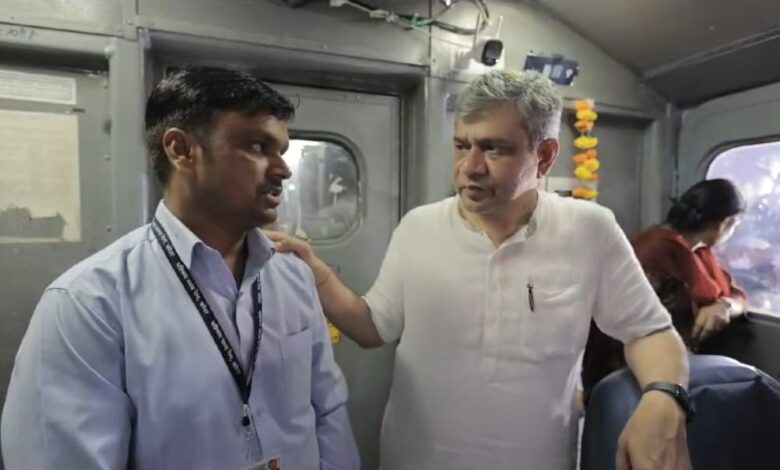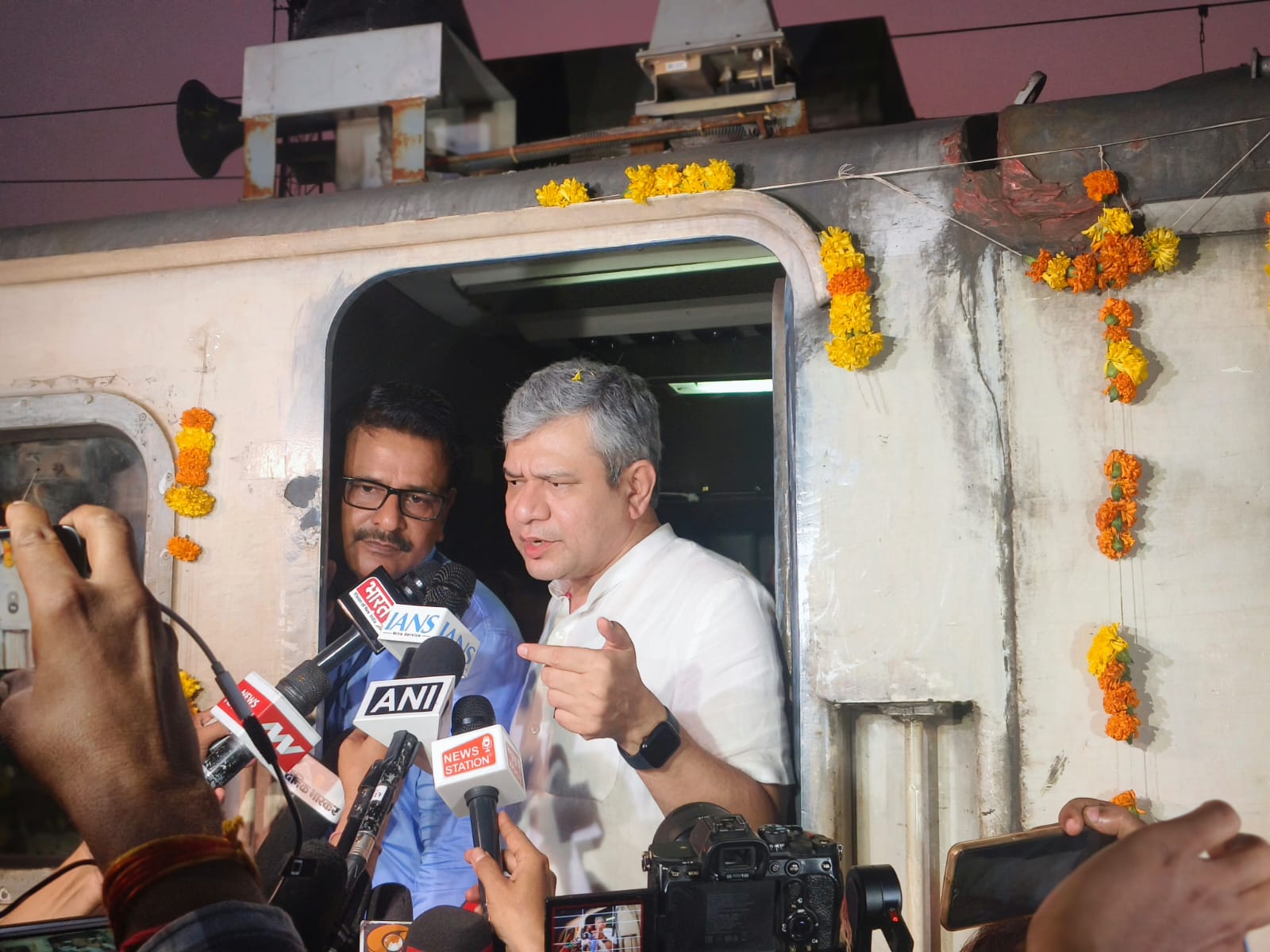MAJOR LEAP IN TRAIN SAFETY & EFFICIENCY: Indian Railway executes Kavach 4.0 on 108 Km track between Sawai Madhopur & Kota
Railway Minister Ashwini Vaishnaw oversaw the trial run, marking the official launch of this advanced safety system. The Minister witnessed seven test on Kavach from driver cabin.

Abhishek Byahut
SAWAI MADHOPUR:
In a major leap towards train safety & efficiency,
Indian Railways on Tuesday successfully executed the indigenously developed Kavach 4.0 Automatic Train Protection (ATP) system on the 108-kilometer track between Sawai Madhopur and Kota, part of the West Central Railway.
This state-of-the-art anti-collision safety technology is now operational, making the route the first in India to benefit from the upgraded version of the Kavach 4.0 system.
Railway Minister Ashwini Vaishnaw oversaw the trial run on 35 kilometre distance from Sawai Madhopur to to Sumerganj Mandii, marking the official launch of this advanced safety system.
The Minister witnessed seven test on Kavach from loco pilot cabin. The tests were related to automatically speed control, permanent speed restriction, loop line setting, level crossing whistling test, signal aspect test wherein Kavach itself controlling all aspects even speeds deliberately increased by the driver.
Kavach is an indigenous automatic train protection system designed to prevent accidents caused by human error, particularly in situations where train drivers may miss or overlook signals. It acts as an additional protective layer over the existing railway operation system, ensuring the safe operation of trains. The system provides real-time monitoring and automatic braking if there is a risk of collision. Kavach also enables safer operation of trains during poor visibility, such as fog, by providing in-cab signaling, which allows drivers to receive signal aspects directly inside the locomotive.

Collision Prevention: Kavach 4.0 detects potential head-on, rear-end, and side collisions between trains and automatically applies brakes to prevent accidents.
SPAD (Signal Passing at Danger) Prevention: The system eliminates incidents where trains pass through signals that display a stop (red) aspect.
Speed Control: Kavach continuously monitors train speed and issues alarms if the speed exceeds 2 km/h above the permitted limit. Automatic brakes are applied if the speed crosses 5 km/h, with emergency braking initiated if it goes beyond 9 km/h.
In-Cab Signaling: By transmitting signal aspects through radio waves directly to the train’s control panel, drivers can read signals without relying on trackside signals, making operations more efficient even in high-speed scenarios.
Continuous Driver Monitoring: The system monitors the driving profile based on upcoming signal aspects, track conditions, and the train’s braking capacity, ensuring the train operates within safe parameters. If deviations occur, automatic braking is triggered to bring the train to a safe stop.
The implementation of Kavach 4.0 in this section required the installation of 130 towers and over 1,200 kilometers of optical fiber cables (OFC). Additionally, 78 Kavach buildings, 178 signaling interfaces, and an MPLS network were constructed to support the system. A total of 87 locomotives, 130 station units, and 48 remote interface units have been integrated with the Kavach 4.0 system to ensure comprehensive coverage and functionality.
West Central Railway had earlier installed Kavach 3.2 on the 549-kilometer Mathura-Nagda section at a rate of 32 kilometers per month. The rapid installation of Kavach 4.0 on the Sawai Madhopur-Kota route within just two months showcases the commitment of Indian Railways to improving safety and operational efficiency.
The system significantly reduces the risk of train accidents, providing an additional layer of safety in rail operations. Kavach ensures that trains adhere to their schedules with greater accuracy, improving overall punctuality. Train speeds are automatically controlled, preventing dangerous overspeed situations.
The risk of accidents caused by SPAD is minimized, thanks to the real-time monitoring and automatic braking features.
With the successful implementation of Kavach 4.0, Indian Railways plans to extend the system to more routes across the country. The initiative is part of a broader effort to modernize rail safety and improve operational efficiency, ensuring that India’s railway network meets global safety standards.





